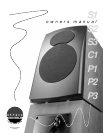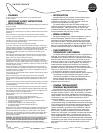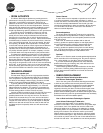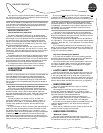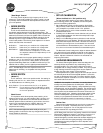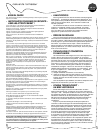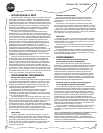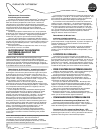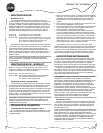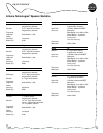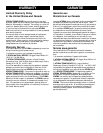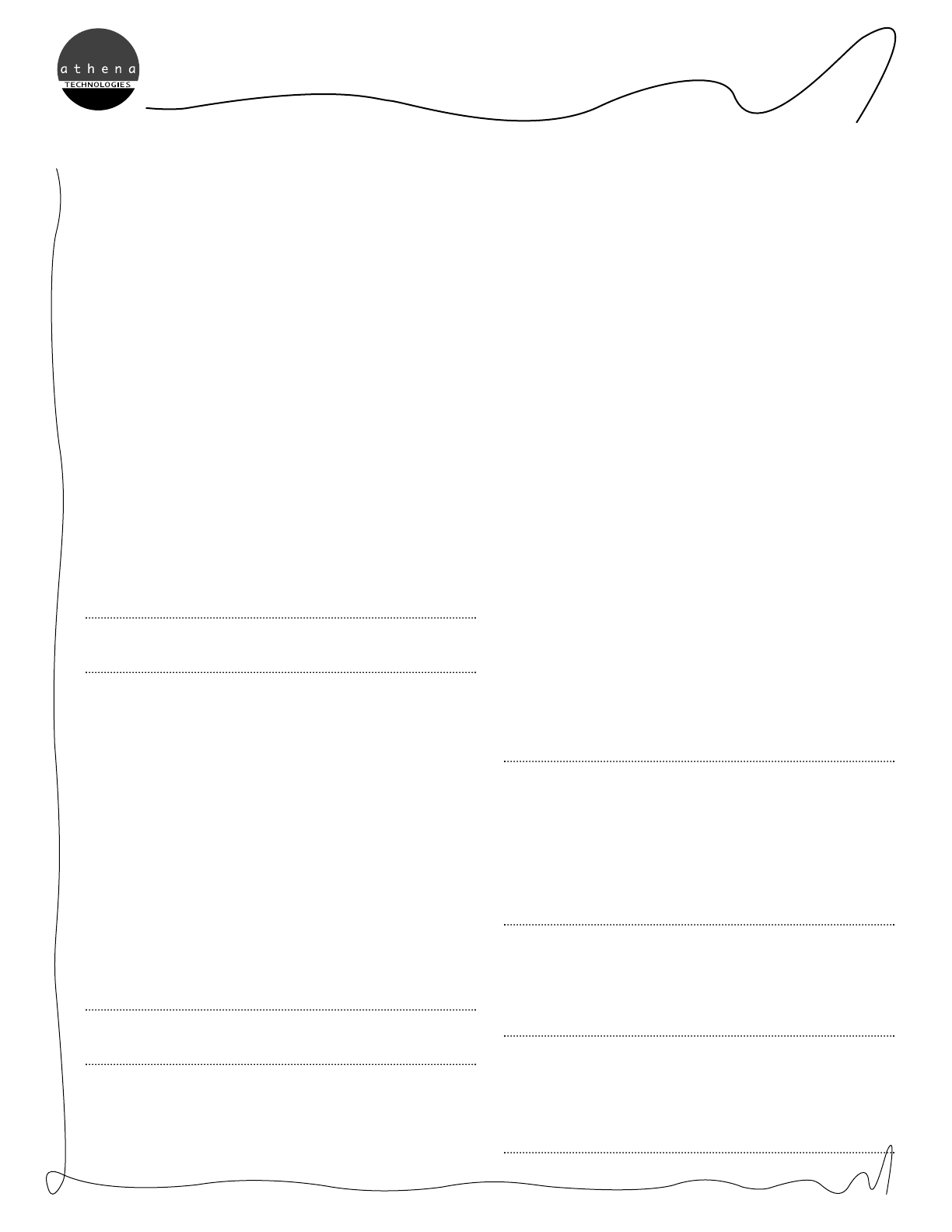
owners manual
"Bass Range" Control
This rotary control adjusts the high frequency roll-off of the
subwoofer. Continuously variable from 50Hz to 150Hz, it is used
to precisely match the subwoofer bass reproduction with that of
your main speakers.
• MODE SWITCH
(Models P2 and P3)
The P2, and P3 subwoofers are equipped with 2 preset
equalization settings designed for the S2 and S3 speakers. The
switch has 3 positions in total. These settings create a perfect blend
between the subwoofer and the main speaker. Either of these two
settings will bypass the Bass Range and Blend controls of the sub
because they are no longer needed, but use of the Bass Level
control is still possible. The following chart explains how to set the
switch and under what circumstance.
S2 Position: Used when you combine with a S2 speaker
S3 Position: Used when you combine with a S3 speaker
SUB Position: Used when you combine with a S1, C1,
another brand of loudspeaker, or when used
as a separate subwoofer independently of the
main speakers.
Set the mode switch to the proper speaker setting to match the
speaker you own. If you use the S1 or C1 speakers with the P2 or
P3 subwoofers, you must use the "SUB" position, and manually
adjust the Bass Range, Bass Level, and Blend controls until you are
satisfied with the results, just like a typical powered subwoofer.
HINT: The Bass Range is the most important control, as it
determines the "blending" of the speaker with the powered
subwoofer.
• MODE SWITCH
(Model P1)
The P1 subwoofer offers a two position switch. One setting for
blending with the S1 or C1, and the other for separate subwoofer
use. Please adhere to the following chart.
S1/C1 Position: For use with either the S1, or C1 speaker
SUB Position: For use with any other loudspeaker, or when
used as a separate subwoofer independently
of the main speakers.
Blend Control
This 2 position switch allows perfect phase matching of the
subwoofer with that of your main speakers. With a choice of 0 or
180 degrees, it compensates for the mid-bass acoustic effects of
different speaker locations and listening room effects. Use of this
control is only permitted when the "MODE" Switch is in the
"Sub" Position, and should only be used when the bass
frequencies seem lacking.
HINT: Have someone adjust the switch while you sit in your
listening position. Its difficult to hear any changes when standing
directly beside the subwoofer.
• SET UP CALIBRATION
(When the Mode is in ‘Sub’ position only)
For best results when setting up your system, assume your
normal listening position and, if possible, have another person
perform the following adjustments.
1. Set the Bass Level Control to its Zero position. Set the Bass
Range Control to 50Hz. Set the loudness and bass controls on
your preamplifier or processor to their "flat" positions.
2. Play a familiar piece of music or video soundtrack that has
substantial bass content.
3. Gradually turn the Bass Level Control clockwise until you achieve
a neutral balance between the subwoofer's deep bass output
and your main speakers.
4. Slowly turn the Bass Range Control clockwise to reach the best
mid-bass with your main speakers. This will be the point at which
bass retains solid impact and fullness. If the bass is too boomy or
ill defined, you have gone too far and should turn the control
counterclockwise to the best balance point. If the sound is too
thin, then turn the control clockwise to the best balance point.
The Bass Level Control is designed to adjust the balance between
your subwoofer and main speakers and should not be used as a
substitute for the bass and loudness controls on your amplifier or
receiver. Adjust the subwoofer's levels for the smoothest low
frequency performance.
• AMPLIFIER REQUIREMENTS
The Athena Technologies
®
Speaker series was designed to be
extremely efficient and therefore very undemanding of the
connected amplifier. The entire series is designed to be 8ohm
compatible with an average efficiency of 93db. They can be played
at high listening levels with average power and are capable of
handling the high power output of large amplifiers.
Most amplifiers with a power rating of 20-100 watts per channel
will efficiently drive Athena Technologies® speakers. If more than
one pair of speakers are being used on the same amplifier channel,
check with the amplifier manufacturer to confirm that the amplifier
can handle loads under 8 ohms.
WARNING: If an amplifier is over-driven, the resulting distortion is
actually many times greater than its rated power. Over-driven
amplifier distortion is called "Clipping", easily identified by its fuzzy,
distorted sound, and can damage any speaker. The volume control
of most amplifiers and receivers is a logarithmic type, which means
that full power may be reached with the volume control set at as
little as the halfway point. Operating the loudness, treble, or bass
controls increases power output well beyond rated levels. The
warranty on your speakers is therefore void if the voice coils are
burned or damaged as a result of overpowering or clipping.
Cabinet Care
Great care and craftsmanship have gone into the construction
and finish of the cabinet. Periodically use a soft, dry cloth to
remove dust or fingerprints. Do not use paper towel or other
abrasive materials as it may damage the finish.
NOTE: Please retain the carton and packing material for the Athena
Technologies
®
speakers to protect it in the event of a move or if it
ever has to be shipped to a service center for repair. Product
received damaged by a service center that has been shipped by the
end user in other than the original packaging will be repaired,
refurbished and properly packaged for return shipment at the
end user's expense.
5



